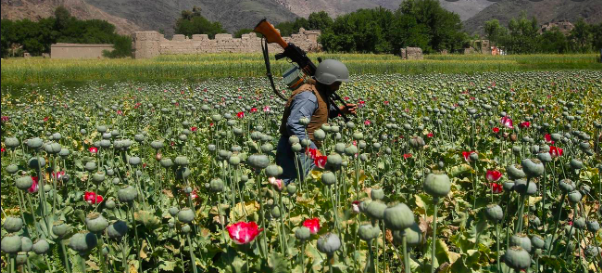The question we have all asked ourselves, but who finances the Taliban? What is certain is that the money has served and so much to live in hiding for 20 years. Given that now they no longer need weapons because they have full deposits left by the dissolved Afghan army, it is nevertheless interesting to be able to understand how just over 100 thousand men have managed to survive in the shadows in all these years. To clarify our ideas, by putting data and resources into a system, Luciana Grosso thought about Il Foglio, which reported the declaration of the Taliban leader Mullah Mohammad Yaqoob according to which the Taliban's revenues in 2020 were equal to 1,6 billion dollars. in the face of just over $ 5,5 billion from the regular government run by Ghani. On their origin Grosso takes as a reference an analysis published on The Conversation by Hanif Sufizada, of the Afghanistan study center of the University of Omaha, of these 1,6 billion the largest portion, just under a quarter, would come from the production and sale of drugs. 84 percent of the world's opium production (the basis for both heroin and street hashish) comes from Afghanistan. The Taliban control the entire supply chain and, as far as we know, impose a 10 percent tax on each of its links, from the peasants who grow poppies to the traffickers who get the drugs, finished and finished, out of the country. Another very large portion of the Taliban's income, more or less another 400 million, comes indirectly from the numerous and very rich Afghan mines. In the mountains of the country are hidden iron, marble, copper, gold, zinc and rare earths, which constitute the only potentially very profitable sector in the country. In reality, the Taliban are not directly involved in exploitation and extraction, but impose a very heavy burden
duty on companies that do so. Then there are some revenues that in some respects can be defined as legitimate and that have to do with the way in which the Taliban, over the years, have invested and laundered their money: real estate speculation, exports, trade in artifacts, spare parts. for cars, minerals: all activities that, according to estimates, can be worth another 300 million dollars. At this point, in our reckoning in the Taliban's pockets, we have reached about 1 billion. About 600 million are still missing. According to Sufizada's analysis, much of this money (500 million) is to be found both in the donations of wealthy private sympathizers and so-called organizations
Middle Eastern charities (which are actually blacklisted by the United States because they are accused of financing terrorism) and under-the-table financing of countries hostile to the United States and somehow close to the Taliban, such as Russia, Iran, Saudi Arabia e Pakistan. At this point, about 100 million are missing. Where did they come from? From taxes. As the Taliban, in recent years and especially months, have taken control of some areas of the country, there they have established their government and therefore their taxes: the "ushr" which is a 10 percent tax on the harvest. of a farmer - and "zakat", a tax on assets of 2,5 percent, in addition to those on roads, businesses, businesses, shops. Thus we arrive at the figure of 1,6 billion dollars. A figure that, according to what was written in the NATO report of September 2020, was sufficient to guarantee "financial and military independence" for the Taliban.
